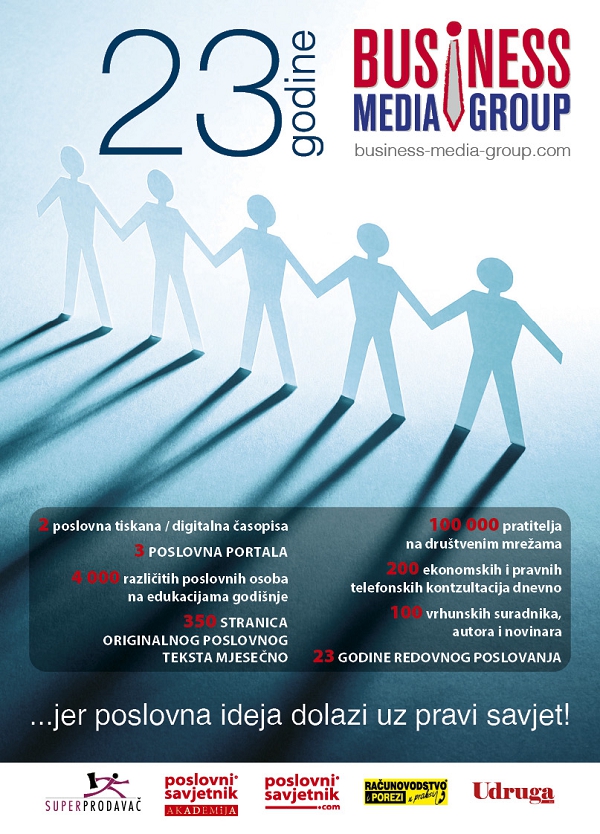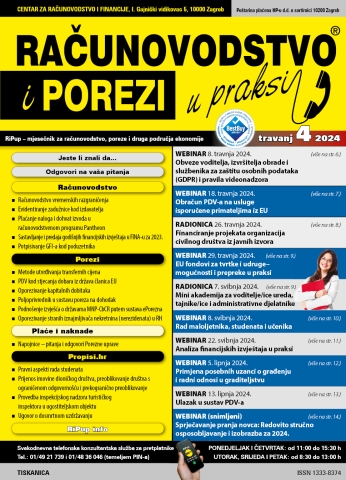John Lodder: How to create an organization where everyone is inspired to give their best?
We are living in the era of reinvention. Companies on every continent are reinventing themselves. Across the world organizations are disabled by bureaucracy; organizations are inertial, incremental and inhumane.
As I wrote in previous columns, we are seeing and feeling these effects more clearly after nearly 2 years working in a pandemic. 80% of the global workforce is not engaged. Employees are afraid; they are stressed while burn-outs and sick leaves increased heavily, also in Croatia with 88% disengagement.
Right now your company has: 21st-century internet enabled business processes, Mid-20th-century management processes, All built upon 19th-century management principles. Prof. Dr. Gary Hamel
In many countries like USA and UK we see that millions of people quitted their jobs -‘The Great Resignation’ - resulting in understaffed companies in several sectors. The consequences are of course lower turnovers and less profit. My conclusion is that both people and organizations have a structural problem which can only be solved by organizations and its people together. Thinking and reading about this I decided to base this column on a book that should challenge every manager and leader to (re)think her/his organization. The book is titled ‘Humanocracy’ written by Prof. Dr. Gary Hamel and Dr. Michele Zanini. I summarize the essentials for you.
Hamel & Zanini
The last fundamental breakthrough is about 50 years ago
Their book is based on a research of more than 100 management innovations over the last 150 years and the pattern is striking. Not only have serial management innovators stopped innovating, but management breakthroughs became generally less, compared to 50-100 years ago.
Actually, the last fundamental breakthrough is about 50 years old. We don’t often talk about management as a technology, but, if you think about management as the ‘’structures, methods and tools we use to organize a collective effort’’ it makes a lot of sense. Many practices we take for granted today were invented by companies’ decades ago, e.g.
-Industrial Research and Development: Bayer, GE - General Electric (1880s)
-Profit Sharing: P&C - Procter & Gamble (1890s)
-HR department: NCR – National Cash Register (1901)
-Assembly line: Ford motors (1920)
-Divisions: GM – General Motors (1921)
-Incubators: Lockheed (1943)
-Lean Management: Toyota (1940s)
-Multi-company ‘platforms’: Visa (1970)
Management inventions are responses to new problems that organizations are facing, e.g., GM's divisional structure enabled the company to better serve multiple customer segments. And the decentralization also helped to prevent overload at HQ as the company grew. A surprising and very important conclusion from Hamel’s research is: ‘’the longest-lasting competitive advantages come from innovation in management systems and practices, not from business or operating model innovations.’’ So diligently pursuing management innovation pays off handsomely!
For instance General Electric (GE)
One of the reasons GE had such an amazing 100-year run is the fact that they forged a number of organizational practices. These innovations enabled GE to remain well managed at a steadily increasing scale and scope, see figure 1.
Figure 1 – GE innovations history
Technologies often evolve in an S-curve pattern, and we reckon management is currently on the flat part (blue circle) of the curve. That means that the current paradigm has reached maturity, see figure 2.
Figure 2 – Bureaucracy reached maturity
Bureaucracy
Companies were built, or in some cases rebuilt, with one goal in mind: ‘’to maximize human contribution.’’ For that bureaucracy was invented!
One sign that we've reached maturity is the fact that most companies, irrespective of sector or geography, all conform to a similar organizational model, rooted in the 20th century bureaucratic template as showed in figure 3.
Figure 3 – Standardization of bureaucracy.
The management problem since the 20th century
Fortune 500 CEOs working in the 1960s would immediately recognize most of the structures, roles and processes in today’s organizations, as their successors are still managing similarly today. If there is anything they might be surprised at?
That would be the increasing bureaucracy by the surge in the managerial & administrative ranks, which have grown much faster (+132%) than employees (+40%) for decades as seen in figure 4.
Figure 4 – Increase of managers and staff vs. employees.
Anything that takes away the true, full contribution of people is stifling and harmful. Bureaucracy does do that in a high degree and thus, very often it is ‘deadly’ for the organization.
The point is that bureaucracy takes away the true, full contribution of the people and so prevents companies from becoming as resilient, innovative, and energetic as they could be, should be and, today, certainly need to be.
We are 20% into the 21st century,Yet the vast majority of our organizations are run with a 20th-century management operating system. It's time for a reboot. (Prof. Dr. Gary Hamel)
Figure 5: Thoughts to solve problems of most organizations and its people with Humanocracy.
Humanocracy
Across the world, organizations are disabled by bureaucracy; they are inertial, incremental, and inhuman.
These companies were built, or in some cases rebuilt, with one goal in mind, to maximize human contribution.
Based on their research Hamel & Zanini introduce an alternative for ‘Bureaucracy’, they name it ‘Humanocracy’.
The goal of humanocracy is to cocreate an environment in which everyone is inspired to give their best.
One of the primary goals in this book is to lay out a blueprint for turning every job into a good job.
Rather than de-skilling work we need to up-skill employees
Argued throughout this book is the shift to humanocracy which requires a radical change in leaders, individuals, teams and the core processes by which organizations are run.
The premise of this book is that most of these choices can and must be revisited.
- Bureaucracy was invented by human beings, and now it’s up to leaders to invent something better.
- The question at the core of bureaucracy is: “How do we get human beings to better serve the organization?”
- The question at the heart of humanocracy is: “What kind of organization elicits and merits the best that human beings can give?”
Some important thoughts and principles from the book
Essential work-related skills are needed e.g.: Vision, Daring, Creativity, Initiative, Expertise, Diligence, and Obedience.
Some hallmarks of humanocracy:
- Zero distance between employees and customers (e.g. Haier).
- Very little friction within the organization: people have permission: to spend money; to innovate; to try (and fail);
- Provide freedom for peer pressure in a stimulating way, self-managing teams, employees are held accountable by team members, colleagues and customers, not by bosses (more as a network than as a hierarchy).
- ‘Think and act’ like a Hacker – Become a “Hacktivist”
Could rebel hackers have the same dramatic impact on management as they had on software?
Yes! To be a hacker you have to get a basic thrill from solving problems, sharpening your skills and exercising your intelligence, in order to improve the results of the company.
To accelerate shifting to a NEW model, leaders should look around to find examples and inspirations
1. Learn from the vanguard.
There are many examples of successful companies with advanced management practices through constant experimentation. Haier is arguably the most ambitious & creative example these days.
More executives should understand both Haier's current model, and how they are evolving it.
(My May column about reinvention describes clearly the development of Haier from a local company to a multinational: https://www.poslovni-savjetnik.com/aktualno/john-lodder-forget-saying-if-it-not-broken-do-not-fix-it)
2. Tackle the barriers to diffusion of new management practices
For instance reimagine management education & research; create real accountability for the human and business costs of running outdated management models.
3. Raise our sights
Let's shake off our torpor, dare to imagine.
We have by no means reached the "end of management." There are plenty of problems (of coordination, collaboration, control) that need to be tackled. And there's never been a better time to start solving them as now!
Food for thought: How to leave Bureaucracy behind on your way to a NEW Model:
-Bureaucratic organizations are inertial, incremental and dispiriting. In a bureaucracy is the power to initiate change vested in a few senior leaders. When those at the top fall prey to denial, arrogance and nostalgia, as they often do, the organization fails.
-That’s why deep change in a bureaucracy is usually belated and convulsive.
-Bureaucracies are also innovation-phobic and use ‘cosmetic changes’ instead.
-While entrepreneurial enclaves like Silicon Valley are important, we need to find ways to turn up the entrepreneurial flame in every organization.
-While veteran leaders may reflect... they usually manage in a world that no longer exists.
-While there may be a finite number of routine jobs to be performed in the world, there’s no limit on the number of worthwhile problems that are begging to be solved.
-Viewed from this vantage point, the threat that automation poses for employment depends mostly on whether or not we continue to treat employees like robots.
-In this maelstrom, the most important question for any organization is: Are we changing as fast as the world around us is developing?
-For most organizations, the answer is no.
-There’s no secret about what drives engagement. From Douglas McGregor’s ‘The Human Side of Enterprise’ to Dan Pink’s ‘Drive’, the formula hasn’t changed in sixty years: Purpose, Autonomy, Collegiality and the opportunity to Grow.
-It seems that every next generation rediscovers the essential elements of human engagement and then does nothing.
-While veteran leaders may have the benefit of experience, they’re weighed down by legacy beliefs. Many of their assumptions about customers, technology, and the competitive environment were forged years or decades earlier.
-Their ideas and opinions often reflect a world or market that no longer exists.
-The question is how much bureaucracy could be eliminated without sacrificing organizational performance?
-The answer is: Much more than you think!
-We have an obligation to pay it forward like: equality, a living wage, equal pay, respect for diversity, parental leave, flextime, health-care coverage, these are worth fighting for, but should we aim still higher?
-We certainly think so.
-We need a new organizational paradigm, one in which human beings are no longer viewed as “resources” or “capital.” We must also reframe the problem: ‘the goal is to maximize contribution, not compliance’. And we need to embed new human-centric principles in every structure, system, process and practice.
-If we are serious about creating organizations that are fit for human beings and fit for the future, nothing less will do.
-Bureaucracies are run not by inventors but by accountants, not by builders but by administrators.
-In a large company, only a fraction of employees are active members of what Phelps evocatively calls the “imaginarium’’.
-In a bureaucracy megawatts of emotional energy get wasted on petty battles, data gets weaponized against adversaries, collegiality gets shredded by zero-sum promotion tournaments and decisions get corrupted by artfully concealed self-interest.
-To change all this, to replace bureaucracy with meritocracy, we must do four things: decontaminate judgments about merit, better align wisdom and authority, match compensation to contribution and build natural, dynamic hierarchies.
-We can do better than this, and we must. By embracing the principles and practices of humanocracy, we can build organizations that are as resilient, creative, and passion-filled as the people who work within them.
-Most importantly, it will turn every job into a good job. Freeing the human spirit that’s the promise of humanocracy, and with grit and determination, you can claim that promise for yourself, for your team, and for your organization.
We are prisoners of our paradigms. All significant break-‘throughs’ are breaks-‘withs’ old ways of thinking. (Thomas Kuhn, 1962)
Some takeaways:
-The future belongs to those with the best next ideas. You need a lot of ideas, from anyone and everyone, to find the best ideas. Since game-changing business ideas are rare, the probability of coming up with a breakthrough strategy depends on an organization’s capacity to generate a large number of strategic options.
-To find the best ideas, everyone has to be free of bureaucracy that stifles and kills their ideas.
-In order for people to come up with such ideas, they have to be valued as human beings, and set free – set free to think, to ponder, to try (and fail), and to make some money in the process. The starting point is to acknowledge that everyone, whatever their role or title, deserves the opportunity to cultivate their creative gifts.
-You need to both exploit and explore; or explore and exploit; as you explore some more.
-Start, as always, with yourself! A question is how do you change the system when you don’t own it, when you’re not a senior vice president, or even a manager? The first step is to change what’s inside of you. To change your organization, you must first change yourself. This means actively committing yourself to the ideals of human agency, dignity, and growth. To varying degrees, bureaucracy makes assholes of us all. Getting woke means more than bashing “the system”; it means doing soul repair in the areas where bureaucracy has eaten away at our humanity.
-Basically: put the wisdom of crowds to work in the best way possible. “Given enough eyeballs, all bugs are shallow”.
-And, as a warning: starting from scratch might be better. But beware and don’t kid yourself, which too will end up growing/building into a bureaucracy. A new model will not come easily.
-Our social, intellectual and technological ability to thrive in the 21st century, and to make full use of other technologies being invented, rests on our capacity to get management on a new S-curve as seen in figure 2.
-We talk about risk like it’s a bad thing. But all forward motion involves risks. You can’t find a risk-free way to accomplish much of anything.
Video’s about Humanocracy
I made a selection of a few short and important videos in case you want to take a ‘deeper dive’ into this subject:
Gary Hamel & Michele Zanin: Humanocracy explained 9’56’’ at: https://youtu.be/wqWac1tbqno
Key Insight 1: It’s Time to Kill Bureaucracy 2’52’’ at: https://youtu.be/IivJLavp-kY
Key Insight 2: There are Alternatives to the Bureaucratic Status Quo 6’50’’ at: https://youtu.be/8hhCL0rccJE
Key Insight 3: To Bust Bureaucracy, Start with New Principles 7’37’’ at: https://youtu.be/VikRpnDLSEE
Key Insight 4: Anybody Can Hack Management 4’48’’ at: https://youtu.be/yRWkpJNg0tQ
Key Insight 5: Every Job Can be a Good Job 5’07’’ at: https://youtu.be/SmwEU0x9e1U
How HAIER works 6’05’’ at: https://youtu.be/AhdjLXdxnFc
For this column I was inspired by and thank Prof. Dr. Gary Hamel, Dr. Michele Zanini, Dr. Randy Mayeux, Dr. Claudia Gross, Prof. Thomas Kuhn, Seth Godin and the book ‘’Humanocracy: Creating Organizations as Amazing as the People Inside Them’’ by Gary Hamel and Michele Zanini. (Harvard Business Review Press, 2020).
(ps/sm)
Povezano aktualno

























